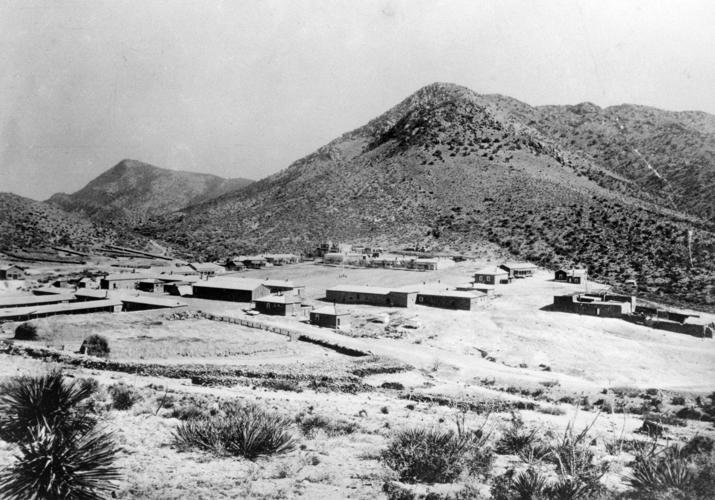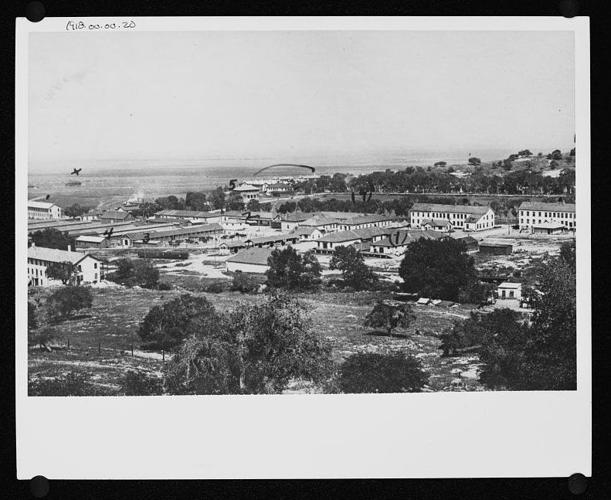Alice Carey Applegate was born in Douglas County, Oregon, in 1852. The family eventually moved south along the Siskiyous Road, where Alice’s father operated a tollhouse over the Siskiyous Trail that spanned from southern Oregon into northern California. Alice recalled the road teaming with travelers in her 1909 journal, Following the Flag: Diary of a Soldier’s Wife.
“Every day the road was thronged,” she wrote, “there were immense freight wagons drawn by six and eight yoke of oxen, towering Marietta wagons drawn by six span of horses. … Twice daily the great red and yellow stage coaches went swinging by. … There were long trains of travel stained immigrants with their weary ox teams. … I must not forget the wagons loaded with apples on their way to the mining towns in California. The wagon boxes were lined with straw and the apples piled into them. These apple peddlers advertised their fruit in a unique way by having a pointed stick fastened to a corner of the wagon bed on which was stuck an apple.”
On Aug. 11, 1886, Alice married Second Lieutenant Herbert Howland Sargent, newly graduated from West Point.
“During my thirty-two years with the Army,” Alice said, “I followed the flag from the golden shores of the Pacific to the bleak New England coast, from the Green Mountains of Vermont to the palmetto groves of Florida, and from Cuba to the far away Islands of the Philippines, a life brim full of thrilling and interesting experiences.”
Several of those years were spent in Arizona Territory, first at Fort Huachuca and later on the Apache Indian Reservation before heading to Fort Bowie.
Herbert was stationed at Fort Walla Walla in Washington Territory in 1888, and from there, he received orders to report to Fort Huachuca, a significant contrast to the cold winter months spent in the Northwest.
According to Alice, “We did not much relish the prospect of going to Arizona, for many and lurid were the tales that were told of the dreadful heat, the sand storms, the Gila monsters, centipedes, tarantulas, etc., but when Uncle Sam said ‘March,’ we marched.” Yet she later admitted that of all the posts on which they lived through the years, Fort Huachuca was her favorite.
About 15 miles north of Mexico, Fort Huachuca was established to secure the border as well as deter Chiricahua Apaches from threatening the area.

An elevated view of Fort Huachuca taken in 1918.
“We met the sandstorms, to be sure,” she wrote, “we also found the Gila monsters, centipedes, tarantulas, and many other creeping and crawling things, but the extreme dryness of the atmosphere tempered the heat, we were six thousand feet above sea level, the winters were mild and delightful, the ranchers were glad to let us have cows to milk for their keep. True, the renegade Apache, called ‘The Kid’ still terrorized ranchers and outlying settlements and detachments had to be sent out frequently to chase the ‘Kid’ and his band of outlaws. Sometimes my husband, with a small command, would be out for a couple of weeks; nevertheless, we were young and life was sweet.”
Considered the most feared outlaw in Arizona during the late 1880s and early 1890s, the Apache Kid had, at one time, been a trusted Indian scout for the Army. By the time the Sargents arrived in Arizona, he was a convict on the run.
He and his band were accused of gunning down ranchers, stealing cattle and horses. In March 1890, shortly before the Sargents arrived, a freight hauler was murdered near Fort Thomas. That August, three men were killed at Hachita, about 50 miles southwest of Lordsburg, New Mexico, all supposedly at the hands of the renegade Kid. He was never caught.
While stationed at Fort Huachuca, Herbert spent several months on temporary duty on the Apache Indian Reservation. Alice was captivated with the process set up to oversee the White Mountain Apaches.
“Friday was issue day and by daylight the Indians fairly swarmed in to get the supplies given them by the Government. Beef cattle were slaughtered on the spot and each head of a household received his or her share. The Indians were formed into long lines, moving in single file; each Indian in line carried a card, giving the number of persons dependent on this particular individual for support. As the tickets were presented at the door of the commissary storehouse so many pounds of flour, sugar, tea, rice and beef were handed out, the amount of each according to the number of dependents on the ticket.”
Alice and Herbert returned to Fort Huachuca after their stint at Fort Apache until orders came to report to Fort Bowie, established in 1862 to protect travelers going through Apache Pass near the New Mexico border and to defend the only water supply for miles. Fort Bowie was abandoned in 1894, shortly after the Sargents left.

This is how Fort Bowie looked around 1880. It was active from the early 1860s to 1894.
In 1898, Herbert was sent to Cuba during the Spanish-American War, Alice at his side. She was delighted to find General Adna Chaffee among those on the island. Alice had met Chaffee during her time in Arizona and had dubbed him the “Iron Duke.” Chaffee had distinguished himself during the Civil War before fighting on the western frontier.
After Herbert retired from the military, the couple settled in Oregon, but both “missed the trumpet calls and the boom of the sunset gun.” Fortunately, the Army was not yet through with them.
In 1916, Herbert was recalled to active duty to serve during World War I.
“Of course I was not required to go with him,” Alice wrote, “but it was the logical thing for me to do. I had always gone with him, and I could not reconcile myself to being left behind.”
She took classes in First Aid, planning to join the Nursing Cadet Corps, but at age 63, she was too old to enlist.
In 1918, Herbert again retired from the military, and the couple settled in Jacksonville, Oregon. Alice died March 1, 1934, at the age of 82. For her service during the years she spent traveling thousands of miles around the world to dozens of military posts, she was bestowed a full military funeral.
This is the third of our history quizzes. How much do you know?







